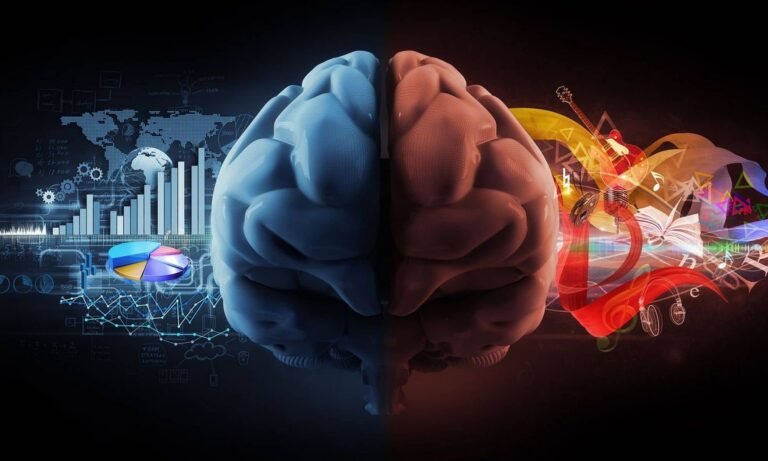The Science of Dreams
Dreams have fascinated humanity for centuries, bridging the gap between imagination and the scientific understanding of our subconscious mind.
They occur primarily during the rapid eye movement (REM) stage of sleep, which is characterized by heightened brain activity akin to that of wakefulness. During this intricate sleep phase, the brain engages in various functions that are believed to contribute to the formation of dreams.
So, Sleep Thight if you wanna have sweet dreams.
Theories regarding the purposes of dreaming encompass a range of psychological and physiological aspects. One of the prominent theories is memory consolidation, suggesting that dreams play a crucial role in organizing and integrating experiences from waking life. This process allows for the reinforcement of memories, preparing the mind for future challenges. Furthermore, dreams can facilitate emotional processing, providing an avenue to explore emotions and unresolved conflicts in a safe, albeit abstract, environment.
Prominent figures in psychology, such as Sigmund Freud and Carl Jung, have contributed significantly to dream analysis. Freud posited that dreams are a window to the unconscious, revealing hidden desires and repressed thoughts through symbols and narratives. On the other hand, Jung emphasized the role of archetypes and collective unconscious in dreams, suggesting that they serve as a means of connecting with universal human experiences.
Contemporary neuroscience has enriched our understanding of dreams through technological advancements in brain imaging. Current research reveals that specific brain regions become activated during REM sleep, indicating that the brain is not merely resting, but rather engaged in complex cognitive tasks. These studies continue to shed light on the nature of dreams and their importance in our psychological well-being and cognitive function.
The Role of Imagination in Everyday Life
Imagination plays a crucial role in our daily lives, serving as a powerful tool that impacts creativity, problem-solving, and coping strategies. From childhood to adulthood, the ability to envision new possibilities shapes our experiences and influences our decisions. Psychologists and educators recognize that fostering a strong imagination can lead to enhanced mental well-being and a more fulfilling life.
One significant aspect of imagination is its contribution to creativity. Engaging in imaginative practices allows individuals to explore ideas beyond their current reality.
This exploration not only fosters artistic expression but also leads to innovative solutions in various fields, including business, science, and education. When one utilizes their imagination, they transcend traditional thinking patterns, making room for original thoughts and concepts.
Moreover, imagination is a vital element in effective problem-solving. When faced with challenges, individuals can draw upon their imaginative capabilities to conjure potential solutions. This mental rehearsal cultivates an environment where individuals can visualize outcomes and assess various scenarios, thereby enhancing critical thinking skills. The ability to picture different scenarios in one’s mind allows for more informed decision-making, as individuals evaluate the implications of their choices before acting.
In addition to its imaginative and problem-solving facets, imagination also serves as a crucial coping strategy in daily life. During stressful or challenging times, the human mind often resorts to imaginative daydreaming or visualization techniques to navigate emotional strain. Research indicates that these coping mechanisms can lead to improved mental health outcomes, enabling individuals to handle adversity more effectively.
In summary, the profound impact of imagination on our everyday lives cannot be underestimated. By harnessing this innate capacity, individuals can foster creativity, enhance problem-solving abilities, and develop resilient coping strategies, thereby enriching their overall life experience.
Dreams vs. Imagination: Similarities and Differences
Dreams and imagination are two intriguing mental phenomena that share notable similarities yet exhibit distinct differences, particularly in their origins and functions. At their core, both dreams and imagination serve as outlets for human creativity and self-exploration, allowing individuals to traverse realms beyond reality. Dreams typically occur during sleep and are often a reflection of our subconscious thoughts, feelings, and experiences. They can feature random imagery and narratives, occasionally pulling from past memories or the day’s events.
In contrast, imagination is an active process, occurring when an individual is awake and consciously engaging in thought. It involves the ability to form mental images or concepts that are not immediately presented to the senses. Imaginative thought enables problem-solving and the generation of innovative ideas, thereby playing a critical role in artistic and creative pursuits. While imagination can be influenced by dreams, it allows for a greater degree of control and intentionality in the creative process.
The relationship between dreams and imagination can be particularly enlightening for artists, writers, and innovators. Many individuals draw inspiration from their dreams, transforming surreal dreamscapes into tangible works of art or literature. For example, the famous painter Salvador Dalí often utilized the themes and bizarre imagery from his dreams to inform his creative vision, resulting in the development of the Surrealist movement. Similarly, author Mary Shelley is said to have conceived the idea for her iconic novel, “Frankenstein,” after an intense dream that sparked her imagination.
Ultimately, while both dreams and imagination foster creativity and self-discovery, they operate differently within the landscape of human cognition. By understanding the interplay between these two processes, individuals can harness the power of both to enhance their creative endeavors and personal growth.
Harnessing the Power of Dreams and Imagination
Dreams and imagination hold immense potential for personal growth and creativity. One effective technique to tap into this power is dream journaling. By recording dreams upon waking, individuals can capture vivid imagery and emotions for inspiration or creative projects.
Visualization is another valuable method. This practice involves creating mental images of desired outcomes, allowing individuals to mentally rehearse their goals. Regular visualization can enhance motivation and confidence, bridging the gap between conscious aspirations and the imaginative realms of the mind.
Engaging in creativity-enhancing routines is also essential. Activities like drawing, painting, or writing can stimulate the brain and bring forth innovative ideas. Connecting with nature or practicing mindfulness can rejuvenate one’s creative spirit, deepening the exploration of dreams and thoughts.
For those keen on further exploring their dreams, lucid dreaming techniques are recommended. Lucid dreaming occurs when the dreamer is aware they are dreaming and can sometimes control the narrative. This unique practice allows individuals to confront fears, explore desires, and create new experiences. Analyzing recurring symbols or themes in dreams can offer significant insights into one’s inner psyche and guide personal development.
What’s More
The posts in My Blog feature reflective, story-driven pieces rooted in personal and societal insights.
The topics in My Interests explore abstract, philosophical ideas and their cultural and societal impact.
👁️ 5,941 Views


















